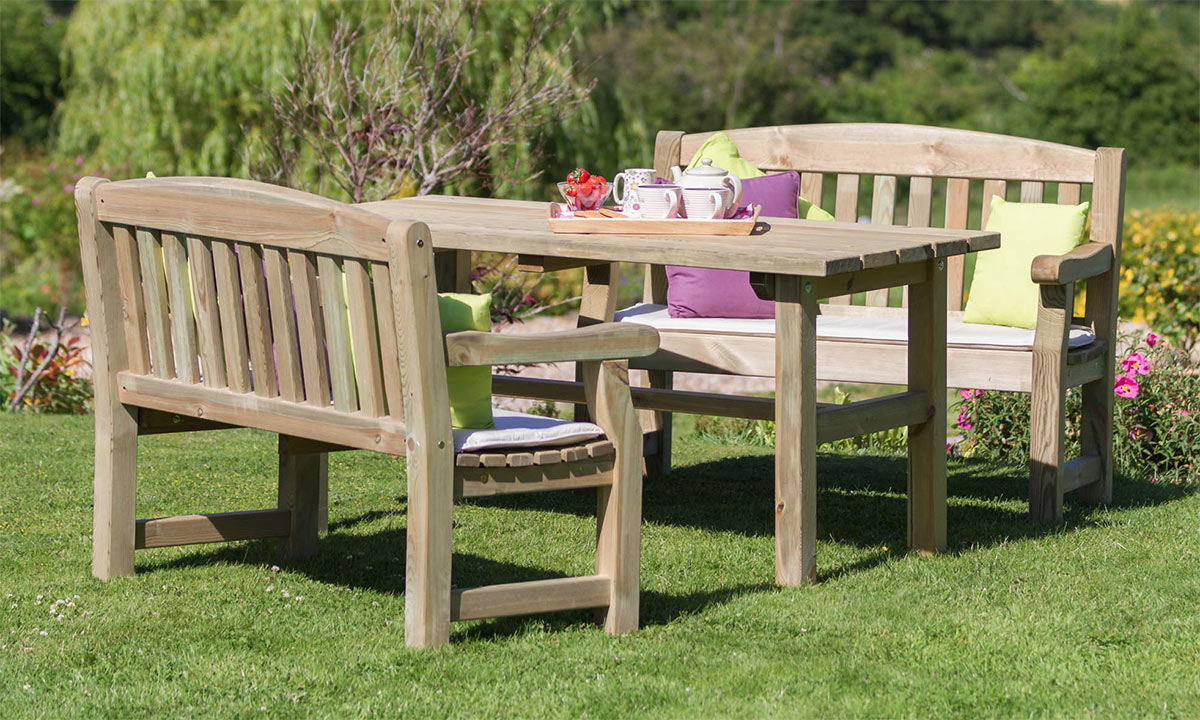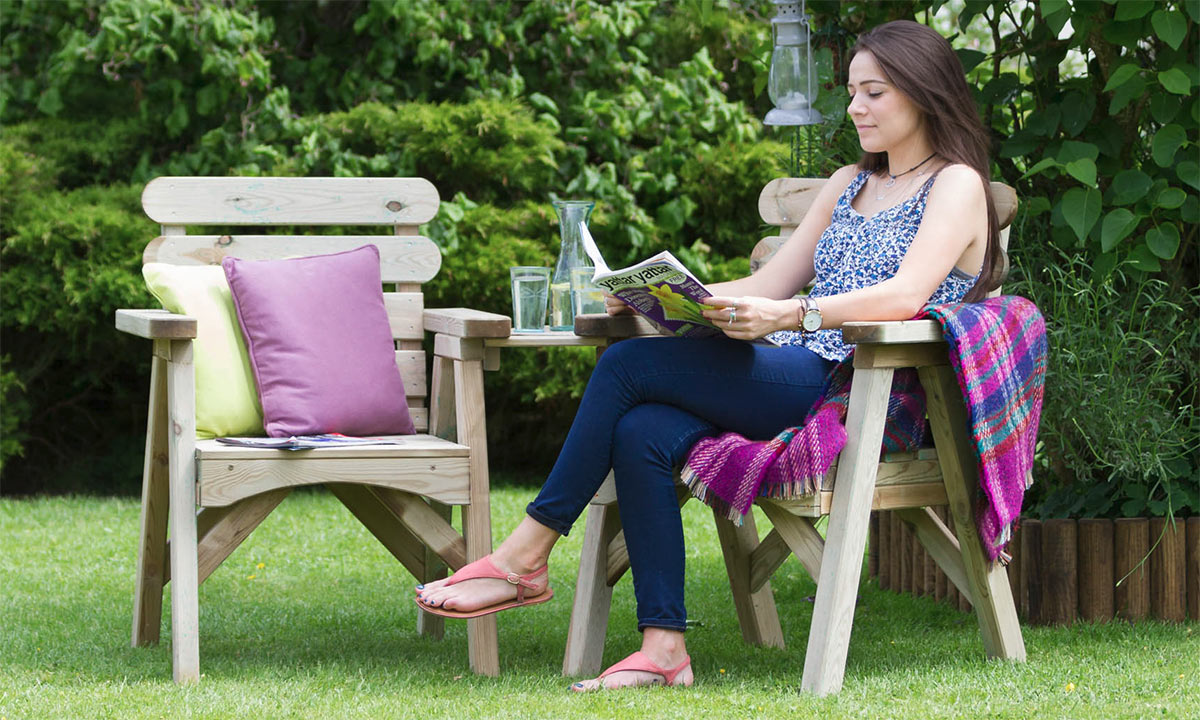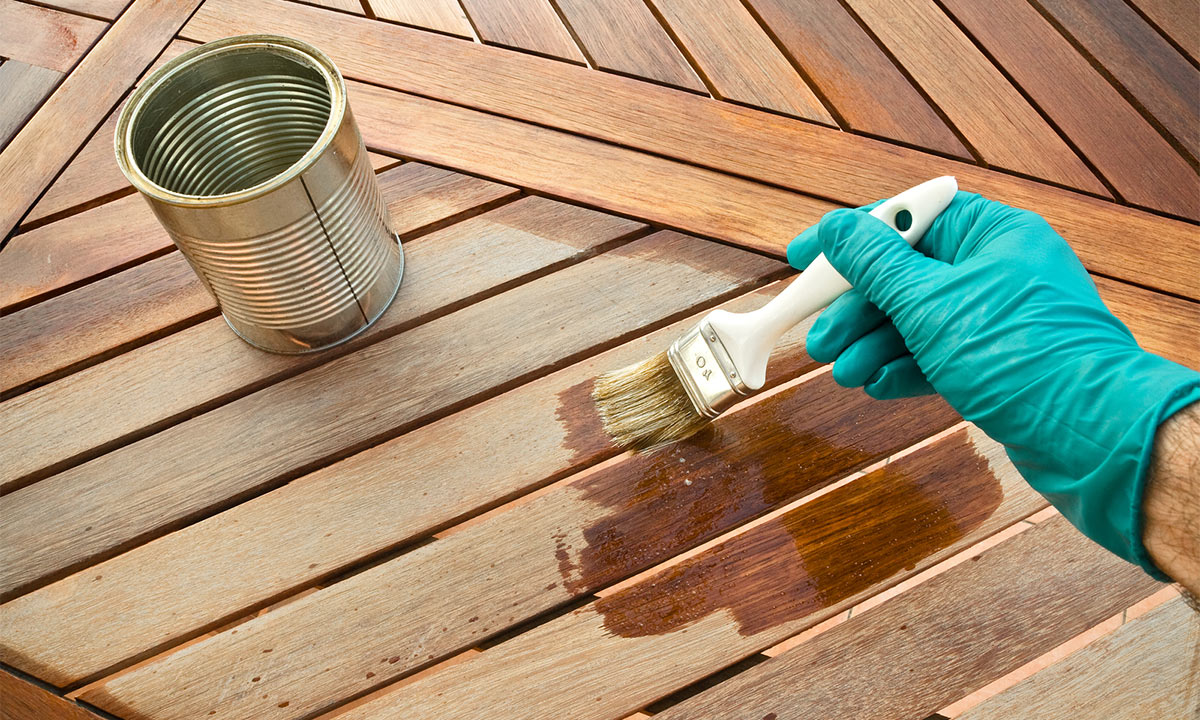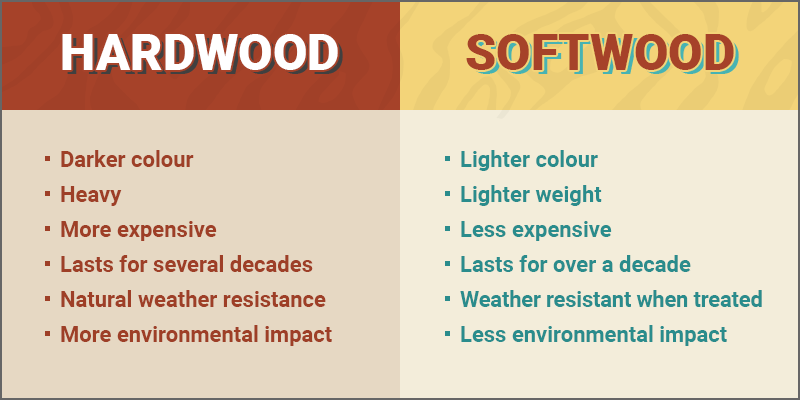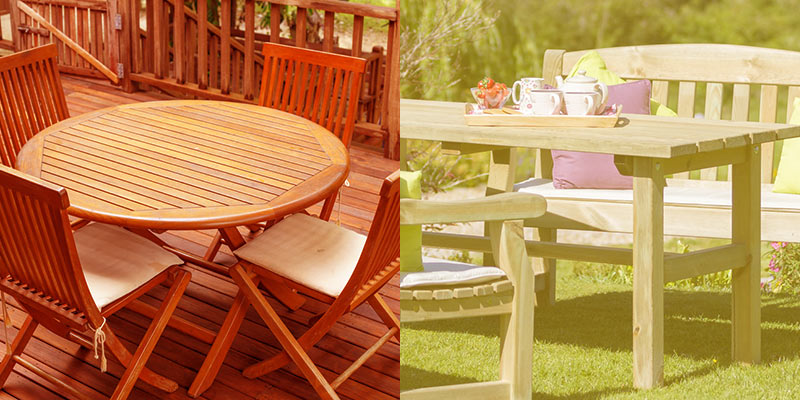
Should I buy hardwood or softwood furniture for my garden? Which is best and what are the advantages and disadvantages of each? We hear questions like this a lot at, so we decided to gather as much information as we possibly could and put it all in one place.
What is the difference between hardwood and softwood?
Despite their names, hardwood isn’t necessarily harder than softwood, and softwood isn’t always softer than hardwood. The difference actually comes down to the type of trees they come from. Hardwood comes from deciduous trees (trees that shed their leaves in the winter) and have seeds with a fleshy or nutty covering. Examples of hardwood include oak, elm and teak. Softwood on the other hand comes from evergreen trees such as pine and spruce. Their seeds are bare and exposed (think conifers).
Hardwood – in particular teak – is popular for use in garden furniture due to its durability and weather resistance. It is also often used for indoor furniture, flooring, tools, musical instruments, barrels and shipbuilding amongst other things. Hardwood tends to be heavier and more expensive than softwood.
Softwood is also used to make garden furniture, but has to be treated in order to protect it from the elements. In general it is more commonly used than hardwood due to its lower cost and ease to work with. Softwood is widely used in construction.
Which one costs the most?
Hardwood comes from slow-growing trees found in tropical regions of the world making it more expensive than softwood, which grows faster and is plentiful in northern Europe. Hardwood is denser and therefore heavier than softwood and requires longer drying times due to the amount of natural oil it contains – both of these factors drive up the cost.
Because of its relatively high cost, hardwood tends to be used for ‘fine’ applications – high quality furniture and so on – or in circumstances where softwood just isn’t up to the task. But that certainly doesn’t mean that softwood is cheap and nasty. The two are simply different and suited to different purposes.
Aesthetics
New softwood tends to look very pale yellow or light brown, whereas hardwood tends to be darker brown or reddish-brown in colour. Note that softwood has to be treated before you can use it outdoors (we wrote an article explaining the treatment process here), which gives it a light yellow or sometimes greenish tint.
Both types of wood will eventually weather and become a silvery colour when left outdoors. Both can be stained, painted or otherwise coated if you prefer a different colour.
When used to make garden furniture, treated softwood is usually cut thicker and has a pleasing chunky, solid appearance. Teak and other hardwoods tend to be cut thinner. Both have a different style, and which is best is simply a matter of taste.
Practicality and comfort
The big drawback when it comes to hardwood garden furniture is weight. It’s costlier to transport, can be trickier to assemble and more difficult to move around the garden. On the plus side, it has more natural weather resistance and can potentially last for decades if you look after it well.
Softwood is easier to cut and work with, allowing manufacturers to easily create comfortable curves and soft edges (our Lily Relax Seat is a great example). The lighter weight can also make assembly more straightforward and moving it around the garden less of a hassle.
Weather resistance and lifespan
As we mentioned earlier, softwood must be treated to make it suitable for outdoor use. Although it can’t quite compete with hardwood when it comes to lifespan, you can still expect treated softwood to last for at least fifteen years. Most of the pressure treated items we sell come with a manufacturer’s 10 year guarantee against rot. There are various oils, stains and paints that can extend the lifespan of your wooden garden furniture even further (more about that further down).
It’s also important to note that wood (both hard and soft) is a natural material and it’s normal for it to bend, warp and sometimes even crack. This happens due to fluctuations in temperature and humidity, and shouldn’t be a major cause for concern.
Which is best for the environment?
Softwood is the clear winner here. Hardwood takes longer to grow, takes longer to dry, has farther to travel to get to the UK and uses more energy to transport due to its extra weight. It also tends to be cut into thinner sections, requiring more cuts to be made and using more energy to do so.
Some would argue that hardwood lasts slightly longer and needs replacing less often, off-setting the initial environmental impact. But whichever you decide to go for, make sure that the timber has been farmed responsibly and hasn’t been cut down illegally. Look out for the FSC mark to guarantee that your furniture was sourced responsibly.
Treatment and maintenance
Hardwood requires very little maintenance due to the natural oils it contains. It will need a wash once a year with a brush and soapy water to remove algae and lichens. If your furniture is good quality and you are happy for it to weather and turn silver, then it doesn’t need much maintenance at all. If you want to preserve the colour then you can apply a teak protector, but this can remove the natural layer of patina that protects the wood.
Good quality softwood furniture will be made with 100% pressure treated timber. Treated timber is durable enough to last for several years without any maintenance, but there a few extra steps you can take to extend its lifespan. Wood stains and paints that contain wood preservatives are available in most DIY stores and should be applied in dry weather. Occasionally washing your furniture and covering it during the winter will also help.
In summary
The table below provides a quick run-down of the pros and cons of both types of wood:
The winner…
Both types of outdoor furniture have their advantages and disadvantages, and many of the differences between the two simply come down to taste and personal preference.
Although hardwood has its natural weather resistance, softwood beats it in terms of weight, affordability and sustainability, not to mention comfort. By using pressure treated softwood we believe you can have the best of both worlds — it will still last for several years and comes with all of the other advantages mentioned above. If you really like the look of teak, you can even stain your softwood furniture to replicate the hardwood look.
So there you have it! We believe that pressure treated softwood is the best kind of wood to use for garden furniture. That’s why we use it in all of our products, and we take care to use trustworthy suppliers that value sustainability as well as quality.

